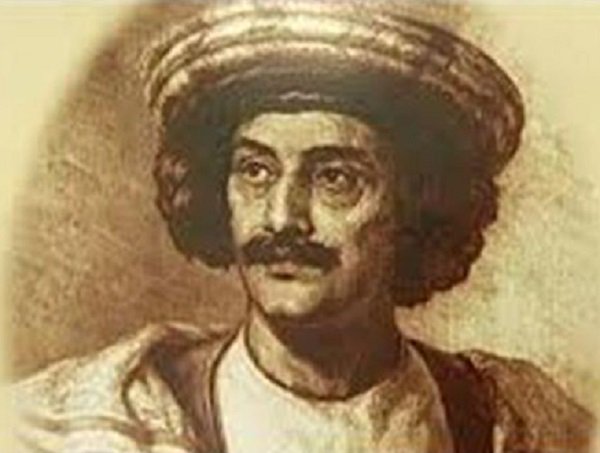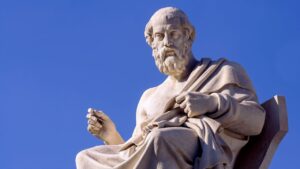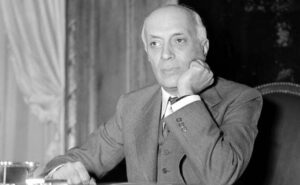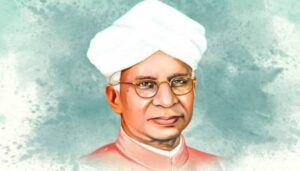Introduction
Raja Rammohan Roy, known as the father of modern India, was the initiator of the New Age in India. His contribution to the welfare of Swadesh India and the nation is unforgettable. His life philosophy once provided immense inspiration to the nation in India’s freedom struggle. He is considered as a great man. Rammohan Roy, the symbol of talent, scholarship, mind and efficiency, was the pioneer of India’s renaissance!
Birth
Raja Rammohan Roy was born on 22nd May 1772 in Radhanagar village in Hooghly district of West Bengal, India into a noble Brahmin family. Rammohan’s great-grandfather Krishnakant Bandyopadhyay served as Amin under the Subedar of Bengal during the reign of King Farrukhshiyar. It is from that source that the use of the surname Ray is prevalent in their family. Rammohan’s father’s name is Ramkant Roy and mother’s name is Tarini Devi.
Childhood and Education
Ramhon Roy had a keen interest in education from his childhood. According to the custom of those days, Rammohan took Arabic and Persian language lessons from a cleric in Patna. He then received education in Sanskrit language and literature and Vedanta Shastra from Supandit Nandakumar Vidyalankara or Hariharananda Teerthaswami near his home village. At the age of twelve he went to Kashidham to learn Sanskrit and studied there for four years. Besides, he also researched Vedanta Shastra. It was at this time that the seeds of spiritual thought were planted in him.
Career
Ram Mohan along with his other brothers looked after the ancestral estate. Rammohan used to stay in Calcutta, Burdwan and Langulpara at different times for business purposes. At that time he had to come in the company of English civilians. Rammohan mastered the English language on this occasion. 1803 AD Rammohan took the job of Collector Woodford of Murshidabad and went to Jessore. However, this job was not possible for more than two months. Meanwhile, he became close to John Digby, a civilian employee of the East India Company. Rammohan worked as Dewan or Khaskarmachari under Digbi from 1805 AD to 1814 AD. His place of work was Rangpur. During this period Rammohan made considerable progress in affairs. Despite serving under the British, Ram Mohan always maintained his dignity. Once upon a time in employment with Sir Frederick Hamilton on this very question
His dispute appeared. On 12th April 1809 AD, Rammohan complained to Lord Minto against him. This charge sheet is said to be Rammohan’s first English work. He left his job and moved to Murshidabad for literary pursuits and social reform work.
Promotion of Mother Tongue
Earlier he formulated Gaudiya Grammar of Sanskrit Grammar in Bengali language to promote mother tongue education. That book was published by the Schoolbook Society in 1803 AD. In this book, he freed the Bengali language from the clutches of Sanskrit and gave it its own form. He was the first to stop the use of tadvabha words and the use of non-finite verbs and complex phrases in Bengali prose. Rammohan was the first to use words like father, masi, meso, gai, kaphachopar, bhai, pagal, pagli etc. which we use in oral language.
Establishment of ‘Atmiya Sabha’ and ‘Brahma Sabha’
1815 AD Rammohan bought a house in Maniktala, Calcutta and started living permanently. He established a Sangha called ‘Atmiya Sabha’ in this Manikatala house. Within some time he brought out two newspapers called ‘Brahman Patrika’ in Bengali and ‘East India Gazette’ in English. In 1827 he founded the religious critical organization ‘Brahmsabha’.
Proponent of Internationalism
Rammohan was a proponent of international thought and ideals in India in terms of political thought. He was the first Indian to show interest in events outside India and to voice his opinion against oppression of people in different parts of the world. It is known that he hosted lavish feasts at home in celebration of the liberation of South America from Spain. In 1822 AD he edited the weekly newspaper Mirat-ul-Akhbar and protested the oppression of the British government on Ireland.
Establishment of school
The country will remain in the dark if only poetry and grammar are covered in the traditional education system. In order to keep pace with the modern era, Rammohan was able to realize with all his heart that the people of India should be educated in English. He established the Anglo-Hindu School in 1822 to introduce education in English.
Foreign travel and reception
Before going abroad, on 19th November 1830 AD, the King of Delhi, Akbar II conferred the title of ‘Raja’ on Rammohan. Mughal Emperor Akbar II who was deposed by the British went abroad to increase his scholarship. He went abroad as a representative of King Akbar II and was able to increase the amount of the king’s scholarship by speaking on behalf of the king in the parliament. At that time Rammohan was the only suitable person in India for this job Abroad, Rammohan received reception from the Unitarian Association.
Religious Reforms
Rammohan preached his new doctrine through the Brahmasabha. He preached that God is one and unique, referring to the unique Brahman described in the Vedas. He is the Brahman of the Vedas. He is unique and formless. Those who worship this Brahman are Brahmans. This doctrine introduced by Rammohan created a special stir at that time. Today there are many followers of Brahminism in Bangladesh and West Bengal.
Rammohan was against the saka worship system of Hinduism. He did not believe in idolatry. He also wrote a book called ‘Pagan system of Hindus’. After reading this book and for various reasons, Rammohan’s father became very angry with his son and threw him out of the house. Rammohan went to Tibet to travel. After a few years in Tibet, he returned to India. Teach English language. Thus he learned ten languages by the age of twenty-three. Rammohan Roy could read and write in Bengali, English, Arabic besides Greek, Hebrew, Latin, Persian and Urdu languages.
Satidah practice
Rammohan was very shocked by the barbaric Satidah practice of Hinduism. At that time, if a husband died in Hinduism, the wife also had to sacrifice herself in the burning pyre along with the husband. This was called co-death practice. Being chaste by committing self-immolation on her husband’s pyre. Ram Mohan started a strong movement against this superstition and superstition of Hinduism. Later in 1829, with the help of Lord William Bentinck, then Barlat of British India was able to pass the Satidah Practice Abolition Act. This is how the infamous barbaric practice of Satidah, practiced in Hindu society for ages in the name of religion, disappeared. Not only the Satidah practice, his tireless efforts also stopped other social evils like child marriage, virginity and child abandonment in the Ganga.
Polygamy
Rammohan’s biographer Nagendranath Chatterjee wrote about this, ‘Raja Rammohan Roy said that it would be very beneficial if the Government made such arrangements that if a person wished to remarry during the lifetime of one wife, he would have to prove to a magistrate or some other royal official that, His wife has a certain fault in the scriptures. If unable to prove, he will not be allowed to remarry.
Last Life
Raja Rammohan Roy died on 27th September 1833 at the age of 61 in Bristol, England. He is buried in Stapleton Grove, Bristol. Later Rabindranath Tagore’s grandfather Dwarkanath Tagore went to Bristol and removed his holy body from that place and buried it in a place called ‘Arnovel’.





I must thank you for the efforts youve put in writing this site. I really hope to check out the same high-grade content from you in the future as well. In fact, your creative writing abilities has inspired me to get my very own site now 😉
I got what you intend, saved to fav, very nice website .
Well I truly liked studying it. This information procured by you is very constructive for accurate planning.
I think other website proprietors should take this internet site as an example , very clean and great user pleasant pattern .
I really love the way you discuss this kind of topic.~;’.~
I do agree with all the ideas you’ve presented in your post. They are very convincing and will definitely work. Still, the posts are very short for novices. Could you please extend them a little from next time? Thanks for the post.
I appreciate your wordpress concept, where you obtain it through? Thanks beforehand!
Hello, i think that i saw you visited my site thus i came to “return the favor”.I’m attempting to find things to enhance my web site!I suppose its ok to use a few of your ideas!!
I love reading your blog because it has very interesting topics.:-`”‘
I really appreciate this post. I¡¦ve been looking everywhere for this! Thank goodness I found it on Bing. You’ve made my day! Thanks again
Thanks for this post, I am a big fan of this website would like to go on updated.
Hi. Cool article. I think other website proprietors should take this website as a model – very clean and magnificent style, in addition to the content. LaterCheers.
Hiya, I am really glad I’ve found this info. Today bloggers publish only about gossips and web and this is really frustrating. A good web site with interesting content, that is what I need. Thanks for keeping this web-site, I’ll be visiting it. Do you do newsletters? Can not find it.
Its astounding, seeking within the time and work you place into your weblog and detailed specifics you furnish. Ill bookmark your web site and pay a visit to it weekly for the new posts.
We are a group of volunteers and opening a new scheme in our community. Your site offered us with valuable info to work on. You’ve done a formidable job and our whole community might be thankful to you.
Many thanks taking a few minutes to discuss this unique, I find myself passionately with this and also adoration looking over on that problem. Just in case likely, since complete specialist knowledge, on earth would you feelings modernizing your main internet page along with other facts? This is very helpful for me.
First off I want to state great weblog! I needed a quick issue in which I want to inquire if you don’t brain. I had been curious to discover how you center your self as well as clear your mind just before creating. I’ve were built with a difficult time cleaning my personal ideas to get my personal ideas on the market. I really do want to write nonetheless it simply appears like the initial Ten to fifteen mins tend to be lost simply just trying to figure out how to begin. Virtually any recommendations or even tips? Thanks!
You have noted very interesting details ! ps decent site.
I gotta favorite this site it seems extremely helpful handy
I like what you guys are up too. Such smart work and reporting! Keep up the excellent works guys I have incorporated you guys to my blogroll. I think it’ll improve the value of my web site
I just love to read new topics from you blog..:,,”
very good post, i surely enjoy this fabulous website, continue it
dress up is always a great and exciting one, or strip poker. Perhaps get some dice from a game board and decide if you land on certain numbers what those actions are. Spice it up is always a great thing!!
you have got a terrific weblog here! would you wish to make some invite posts on my blog?
A lot of thanks for your whole hard work on this web page. My mother enjoys setting aside time for internet research and it is easy to understand why. All of us know all regarding the powerful tactic you provide simple suggestions through the blog and improve contribution from some other people about this idea and our own simple princess is certainly studying so much. Take pleasure in the remaining portion of the new year. Your performing a pretty cool job.
It is challenging to discover knowledgeable people on this subject, but you sound like you know what you are talking about! Thanks
Amazing you hit it on the “dot” the – Gulvafslibning | Kurt Gulvmand I will post to Twitter and Facebook By the way whats the latest on Bahrain awesome news reports.
Great internet site! I am caring this!! Will come back once more. I’m bookmarking your feeds also
Good an very informative post. I will come back to your blog regullary.
It is actually a great and helpful piece of info. I’m satisfied that you just shared this useful info with us. Please stay us up to date like this. Thank you for sharing.
i like wireless internet because you can surf anywhere and you can avoid those ethernet cables::
Companion, this web site will be fabolous, i merely like it
Thanks so much for another post. I be able to get that kind of information information. friend, and exactly.
Spot i’ll carry on with this write-up, I must say i believe this excellent website requirements far more consideration. I’ll probably be once more to see additional, thank you that information.
You made various nice points there. I did a search on the theme and found nearly all people will go along with with your blog.
I adore your wp web template, wherever do you obtain it through?
J’aime cette prise de vue toutefois j’en ai avant cela lu bien d’autres de meilleures qualifications
I gotta favorite this website it seems very helpful .
It¦s really a nice and useful piece of information. I am glad that you just shared this useful info with us. Please keep us informed like this. Thanks for sharing.
There is noticeably a bundle to learn about this. I assume you made sure nice points in options also.
Magnificent site. A lot of helpful information here. I am sending it to a few pals ans also sharing in delicious. And certainly, thanks on your sweat!
This is the appropriate weblog for everyone who wishes to discover this topic. You recognize a great deal its virtually not easy to argue together with you (not too When i would want…HaHa). You actually put a brand new spin using a topic thats been written about for years. Fantastic stuff, just fantastic!
I’d must check with you here. Which isn’t something It’s my job to do! I love to reading an article that may make people think. Also, thank you allowing me to comment!
I’ve read a few good stuff here. Certainly worth bookmarking for revisiting. I wonder how much effort you put to create such a magnificent informative web site.
Straight to the point and well written! Why can’t everyone else be like this?
Nice post. I understand some thing more difficult on diverse blogs everyday. It will always be stimulating you just read content from other writers and exercise a specific thing from their site. I’d would rather apply certain with all the content in this little blog no matter whether you don’t mind. Natually I’ll provide you with a link for your web weblog. Thank you for sharing.
Excellent beat ! I wish to apprentice whilst you amend your site, how could i subscribe for a weblog site? The account helped me a appropriate deal. I had been a little bit acquainted of this your broadcast provided bright transparent concept
I’ve been absent for some time, but now I remember why I used to love this web site. Thanks, I?¦ll try and check back more often. How frequently you update your website?
I am glad that it turned out so well and I hope it will continue in the .future because it is so worthwhile and meaningful to the community.
I appreciate your work, thankyou for all the interesting blog posts.
great post, very informative. I’m wondering why the other specialists of this sector do not understand this. You should proceed your writing. I am sure, you’ve a great readers’ base already!
I enjoy your writing type, do keep on writing! I’ll be back!
I am typically to blogging we really appreciate your content. The content has truly peaks my interest. I’m going to bookmark your web blog and keep checking for brand spanking new details.
There are certainly a couple more details to take into consideration, but thank you for sharing this information.
The application is available free and there is a paid version as well. Twitter Training – Getting started with Twitter Twitter is just another example of the light speed at which communications are catapulting forward, and corporate America (as well as home business online marketers) should do our best to keep up.
Thank you for the auspicious writeup. It in fact was a amusement account it. Look advanced to more added agreeable from you! By the way, how can we communicate?
This website is actually a walk-through its the knowledge it suited you in regards to this and didn’t know who to question. Glimpse here, and you’ll absolutely discover it.
You created some decent points there. I looked online for the issue and found most individuals should go in addition to with your internet site.